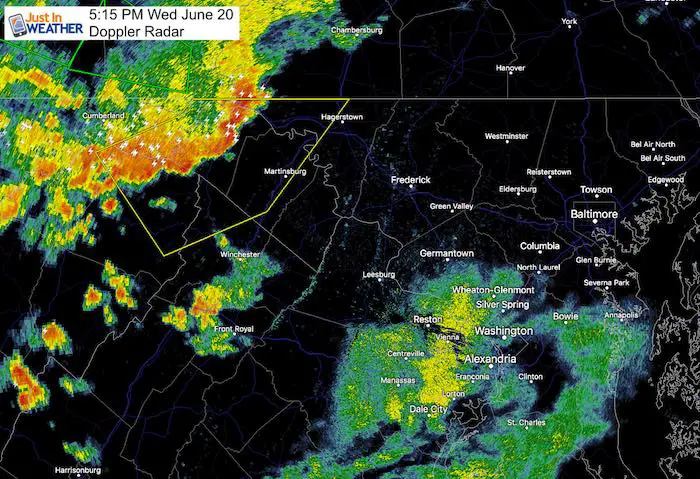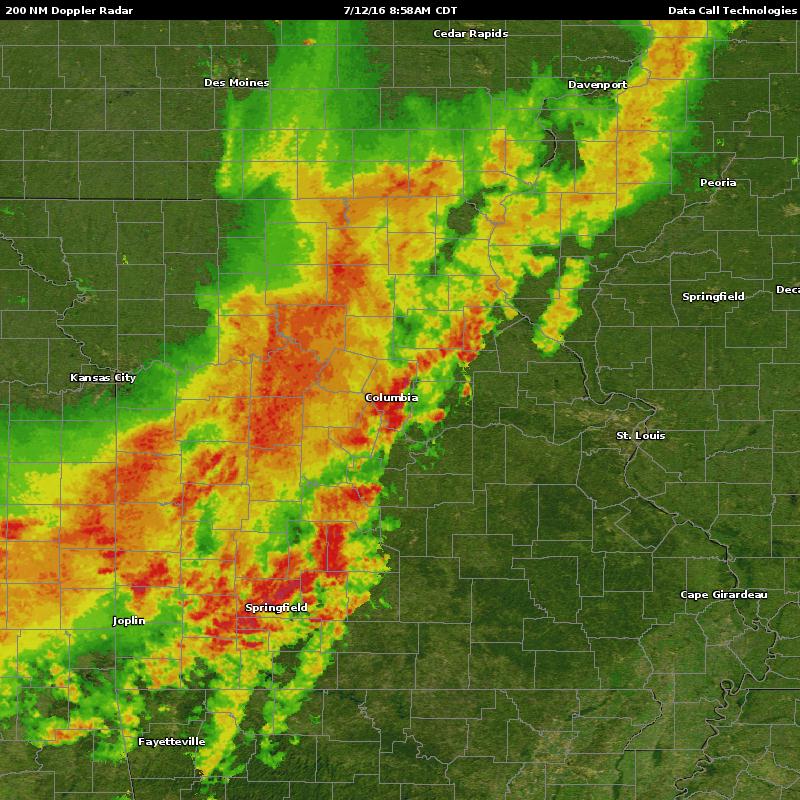


Weather forecasters determine the distance to an oncoming storm and the amount of precipitation by the strength and speed of the pulse returning to the weather radar site. This enables a meteorologist to analyze and interpret the type of weather occurring dozens of miles away from the radar.

If the radar beam bounces off precipitation such as rain or hail, the beam will return to the weather disk, where the data is processed into various parameters. This focused beam radiates outward from an antenna (also known as a radar dish). Weather radar utilizes either a solid-state or tube transmitter to send energy pulses (also known as radar beams) into the air to detect precipitation. As a result, radar can be an exceptional tool in a meteorologist’s arsenal for helping to protect life and property. Meteorologists can use this information to determine specific areas where dangerous weather conditions exist. When the electromagnetic pulse strikes an object such as a raindrop or a snowflake, the wave reflects back to the radar with data that can be analyzed by meteorologists. Weather radar (also known as Doppler weather radar) is an instrument that sends pulses of electromagnetic energy into the atmosphere to find precipitation, determine its motion and intensity, and identify the precipitation type such as rain, snow or hail. That’s why we compiled the most frequently asked questions to create a basic overview of radar technologies, options and benefits. Harasti,P.R., McAdie,C.J., Dodge, P.P., Lee, W-C, Tuttle, J., Murillo, S.T., Marks, F.D.Weather radar is always a hot topic among our clients. Rogers, and F.Roux, 2005: “A numerical simulation of Hurricane Bret on 22-23 August 1999 initialized with airborne Doppler radar and dropsonde data” .Soc., 131 (605) p.155-194 (Jan. Zhang, 2010: “Estimation and mapping of hurricane turbulent energy using airborne Doppler measurements.” Monthly Weather Review, 138(9)p.3656-3670 (September 2010) Marks, 2012: “Multiscale analysis of mature tropical cyclone structure from airborne Doppler composites,” Monthly Weather Review, 140 (1), P. Environmental flow impacts on tropical cyclone structure diagnosed from airborne Doppler radar composites.
#PAST US DOPPLER RADAR SOFTWARE#
Evaluation of the Hurricane Research Division Doppler radar analysis software using synthetic data. The relationship between spatial variations in the structure of convective bursts and tropical cyclone intensification using airborne Doppler radar.

A wavenumber-1 asymmetry arises, showing that in the downshear (upshear) quadrants of the TC, updrafts are more (less) frequent and deeper (shallower)… Rainband updrafts become deeper and stronger with increasing radius. The selected updrafts are then collectively analyzed by their frequency, radius, azimuthal location (relative to the 200–850 hPa environmental wind shear), structural characteristics, and secondary circulation (radial/vertical) flow pattern. An automated algorithm is developed to identify the strongest rainband updrafts across 12 hurricane-strength TCs. Journal of Geophysical Research: Atmospheres, 127(6), e2021JD035718.4Ībstract: Ten years of airborne Doppler radar observations are used to study convective updrafts’ kinematic and reflectivity structures in tropical cyclone (TC) rainbands. Statistical Analysis of Convective Updrafts in Tropical Cyclone Rainbands Observed by Airborne Doppler Radar.


 0 kommentar(er)
0 kommentar(er)
